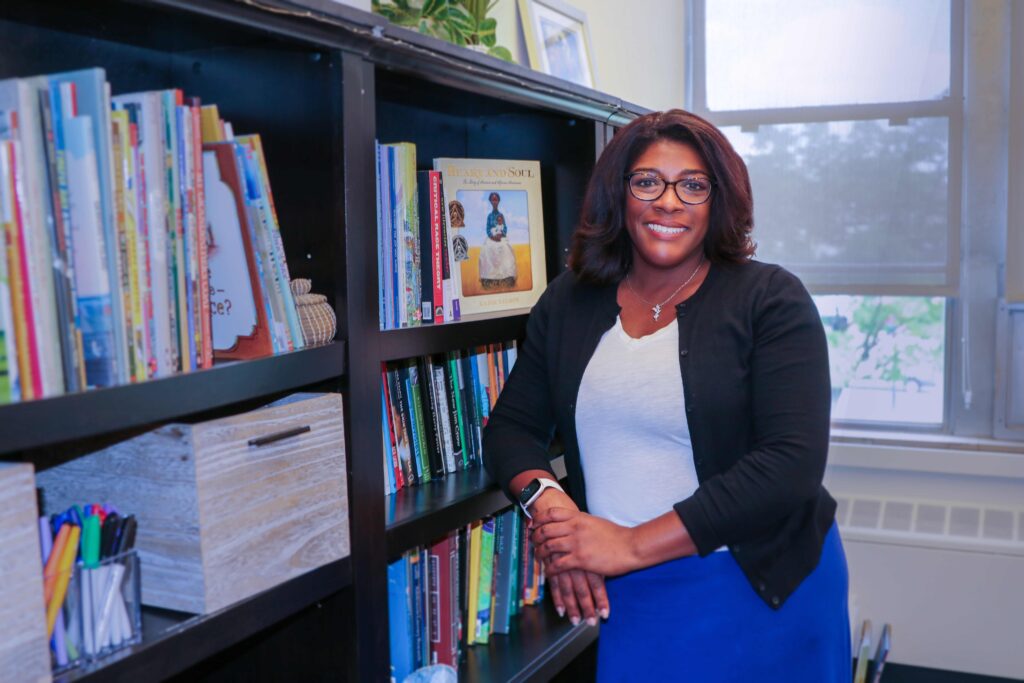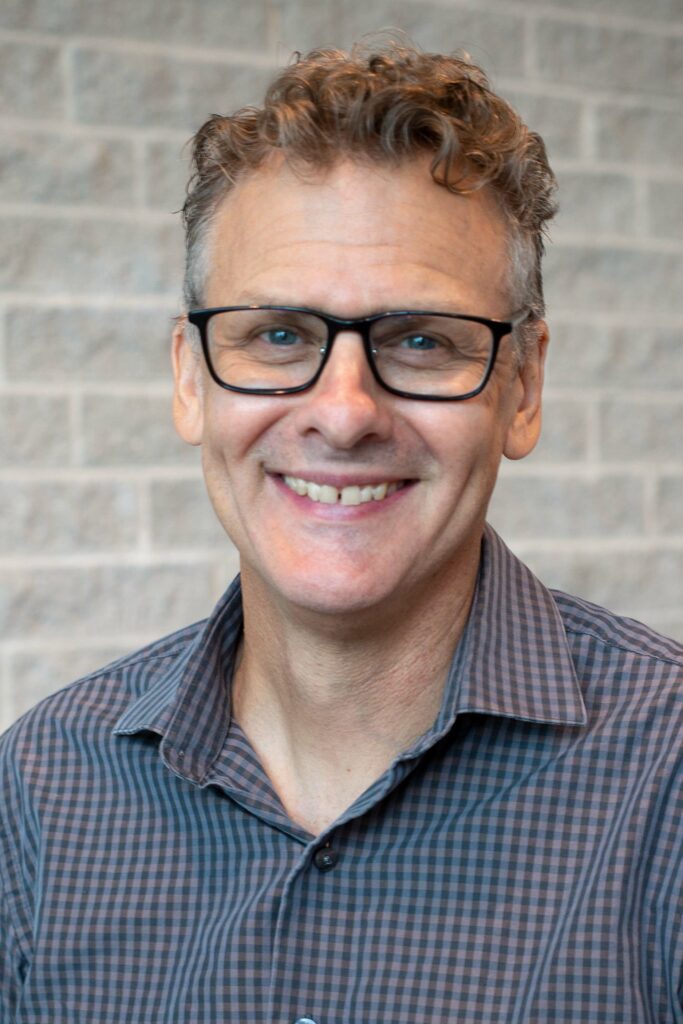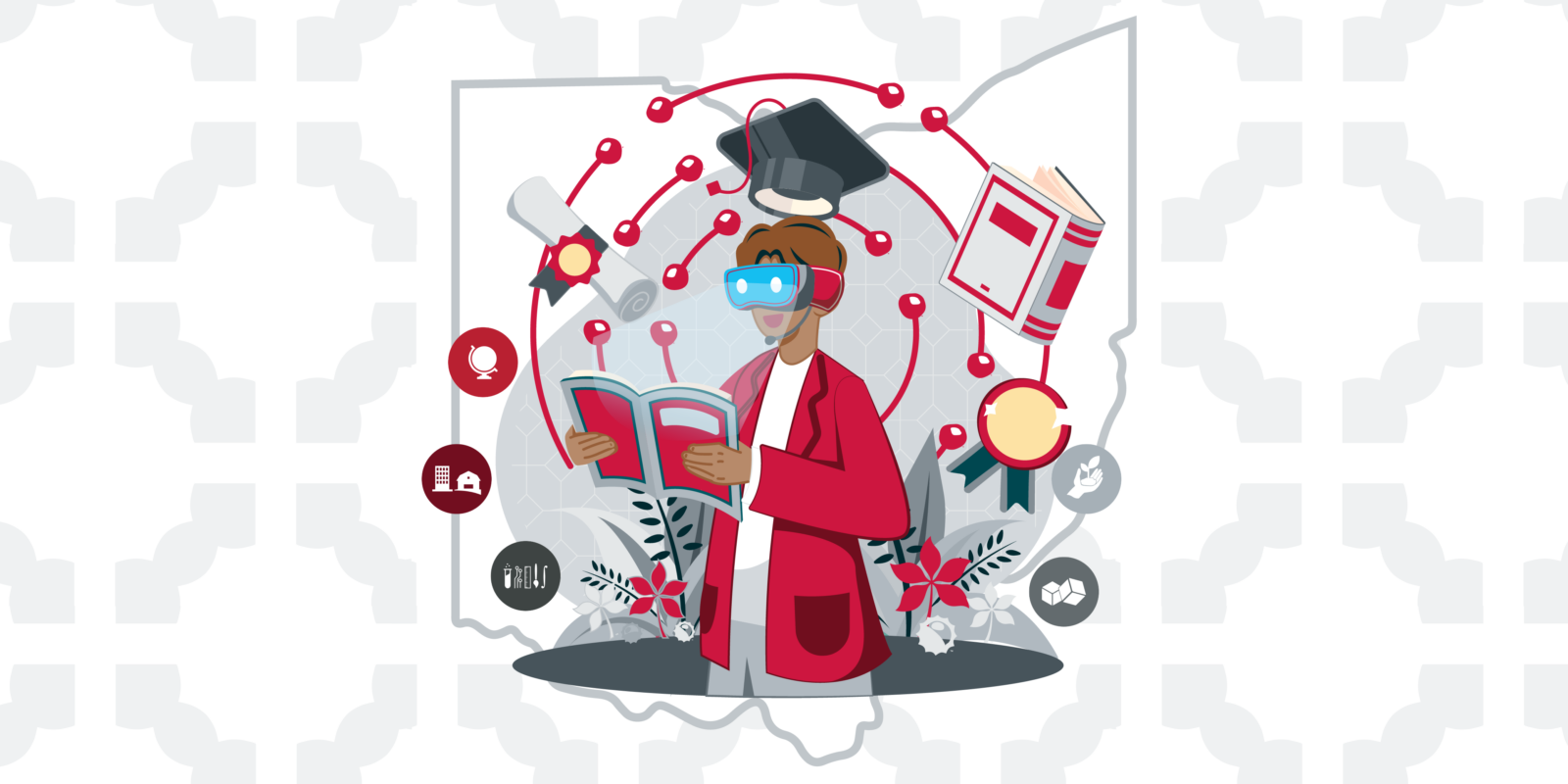Last autumn, most — but not all — Ohio State University classes transitioned back to in person post-pandemic. The popular Introduction to Children’s Literature course, for example, offered 24 online sections to undergraduate students across the university. Last year, more than 500 students enrolled in the fully online version of the course.
There’s a good reason that new chiefs of online education have been appointed at both the university and the College of Education and Human Ecology. Higher education, and a sizable chunk of its students, depend on it.
“If we look at the demographics coming up, and the current demographics we have, that future has to include some type of online or hybrid approach to teaching and learning,” said Detra Price-Dennis, executive director of the college’s new Center for Digital Learning and Innovation. At the university level, Jason Lemon was named the first vice-provost and dean of online learning in May.
“The future of teaching and learning in the digital age must include online learning,” Price-Dennis said. “So, this notion of ignoring it, or it’ll go away, or eventually everyone will come back around — that’s not the moment that we’re in anymore.”
In a 2022 Quality Matters survey of 317 college administrators overseeing online learning, 81% reported that enrollment for in-person courses stagnated or declined from autumn 2021 to autumn 2022, while 56% saw increased enrollment in online or hybrid classes.
A majority of those administrators project that by 2025, most undergraduate learning will be a balance between online and in-person classes, and some will be fully online. For nontraditional and graduate students, they predict, the proportion of online learning will be even larger.
A familiar face now directs new center

Price-Dennis became director of the center last year, after doing similar work at University of Texas-Austin and Columbia University’s Teachers College. A three-time alumna of the college and former teacher, she is charged with helping the college lean into the benefits of technology to give students richer, more equitable experiences.
Fostering innovative, deeper online experiences often means working with instructional designers and training faculty to approach teaching a bit differently. One graduate course Price-Dennis co-developed at Columbia, for example, brought together six interdisciplinary faculty to teach separate modules of a course on equity and reimagining education.
“It just wasn’t done before,” Price-Dennis said. “Students were so excited about this certificate and having multiple faculty co-teach the courses. They said, ‘I can take a class with Chris Emdin and (college alum) Mark Gooden, presidents of AERA, Amy Stuart Wells — early childhood and psychology and nutrition and ed leadership.’ And everyone’s approaching the same question from their disciplinary perspective. The doctoral students went wild.”
Her team did then what she and the center hope to do now with college faculty: create and collaborate.
“I was the lead for the team and managed and directed the program, but it was still about all of us bringing our expertise around a set of objectives, and really thinking about assignments that can live across courses, across modules,” she said.
AR/VR, research and more online offerings
At Ohio State, Price-Dennis has spearheaded Tech Sandbox workshops so that faculty and students can tinker with augmented reality/virtual reality headsets, 3D printers and electronic cutting machines.

In September the center secured a grant from Apple that will pair undergrads with faculty on projects that leverage technology for social change in schools and community organizations. Clinical Associate Professor Tasha Lewis, for example, will lead students studying wearable technology for the Columbus Fashion Alliance. Rick Voithofer, associate professor of learning technologies and part of the center, will facilitate research around that initiative and others.
“Part of my role as we partner with faculty is to see — if there’s any work they’re doing in terms of technological innovation — (is there) anything we can do to support them doing research in that area?” Voithofer said. “When (Clinical Associate Professor) Tracey Stuckey and I first conceived of a center two, three years ago, we thought, let’s not do any projects without a research component.”
But a major thrust of the center will be to drive online offerings for the college — at least doubling in two to three years the number of online programs and certificates the college offers. Online courses take at least 12 to 18 months to be approved and launch, Price Dennis said.
Knowing some faculty are skeptical, Price-Dennis formed an advisory committee to ensure that faculty voices are present.
“Part of the conversation is embracing the moment that we’re in and making sure our community understands they have a voice in determining the way that we move forward,” she said.
“I think we need a robust set of offerings. We’re not trying to move everything online. We’re not trying to keep everything in person. We’re trying to figure out how to meet the needs of our students, but also how to grow the skills and dispositions of our faculty to meet the needs of our students.”
Meeting students where they are
Analysts for years have warned that higher education is careening toward an “enrollment cliff” because of declining birthrates. Ohio, for example, is predicted to lose 15% of its higher education students from 2012 to 2029. As of 2022, Ohio college enrollment has dropped 12%.
One potential area of growth for enrollment is nontraditional students — those older than 25, transfer students and military service members who delayed college. Numerous studies show that they and graduate students are the ones who prefer online classes, especially asynchronous classes, the most.
“So, we’re talking about students who may have family care responsibilities, work responsibilities, and they’re trying to balance all of this,” Price-Dennis said. “They’re deliberately and intentionally seeking a program that understands their life and their priorities and tries to help them achieve larger goals.”
They’re deliberately and intentionally seeking a program that understands their life and their priorities and tries to help them achieve larger goals
Detra Price-Dennis
A number of faculty members embrace the inclusivity that online programs and certificates offer these students and others.
“What I’m finding is that there are faculty in every single department that are interested in either developing new programs or transitioning part of their current program online…,” she said, “ideas that have been percolating and needing someone to help put the process together and support them.”
Because K-12 schools also were forced to pivot to online instruction overnight, teacher educators are an obvious group to engage — teaching them online instruction and technology use as they receive it. Voithofer is working with departments to develop online minors and certificates that will prepare students to teach online — a critical need laid bare during the pandemic.
The possibilities for teaching innovation are endless, Price-Dennis said. For preservice teachers, virtual reality can be used to simulate learning situations with students, or parent teacher conferences. For their students, augmented reality opens wide a world of innovative thinking.
“Whether they’re studying animals in the ocean, animals in the rainforest, the solar system…,” Price-Dennis said. “I remember, like it was yesterday, trying to map out the distance of all the planets on the playground and making these huge circles so that my elementary-age students can get a sense of where earth is and how far away the sun is. … But you could do something like that with AR in your classroom. If you’re looking at anatomy and physiology — the inside of a blood cell, the journey of a blood cell — all kinds of things that you can do just by using AR.”
Ideas for helping nontraditional students and professionals include making online certificate programs “stackable” so students can add them up to equal a minor or a degree. Also, developing certificates that can help people advance in their jobs. That, Price-Dennis said, could become a signature area of growth for the college’s online and professional development space.
“We’ve just ceded that market to other colleges,” she said. “We need to step into it, and then we need to decide how to be leaders in it. What does it look like for EHE to leverage all of the knowledge that our faculty have around pedagogy and content in an online space?”
“That’s going to be a challenge, but that’s part of growing our footprint.”

